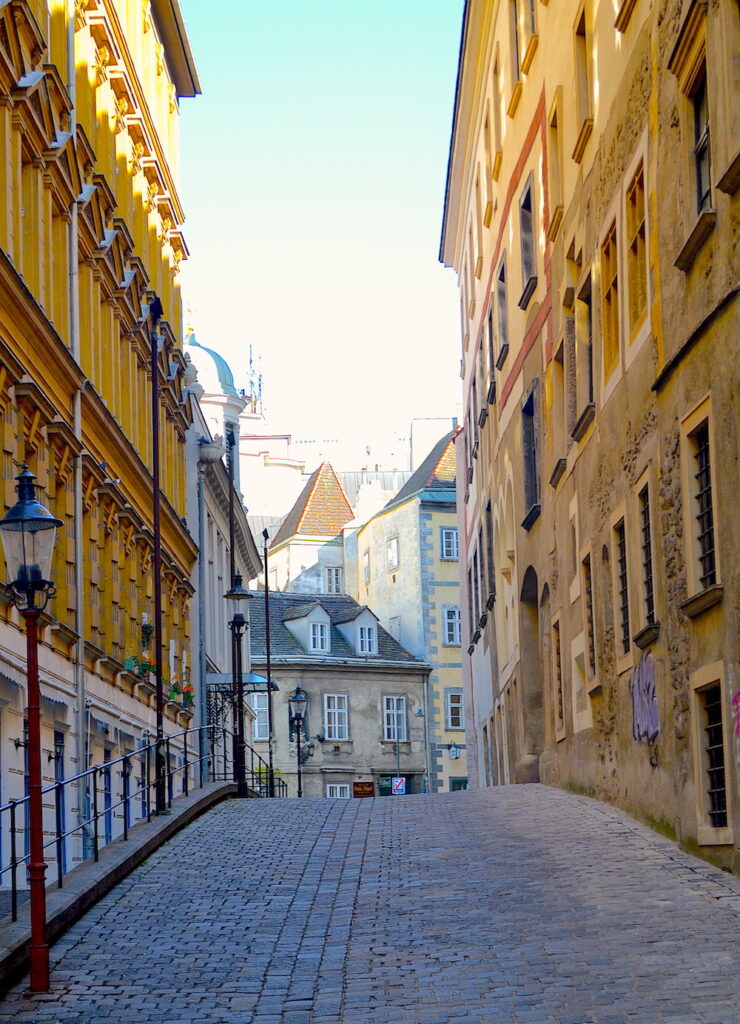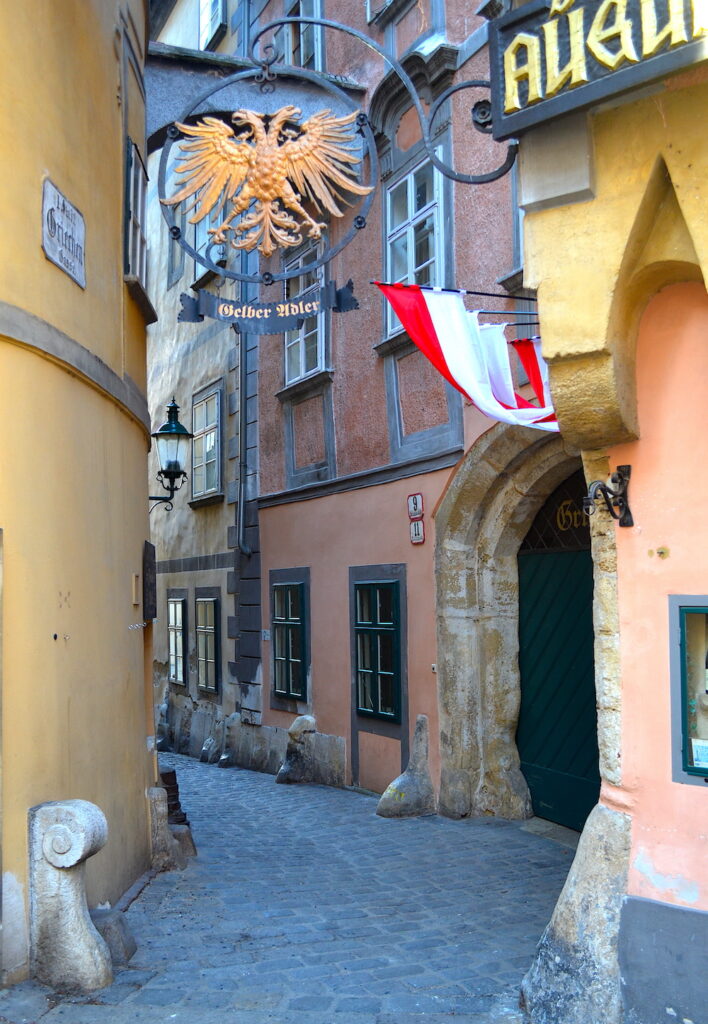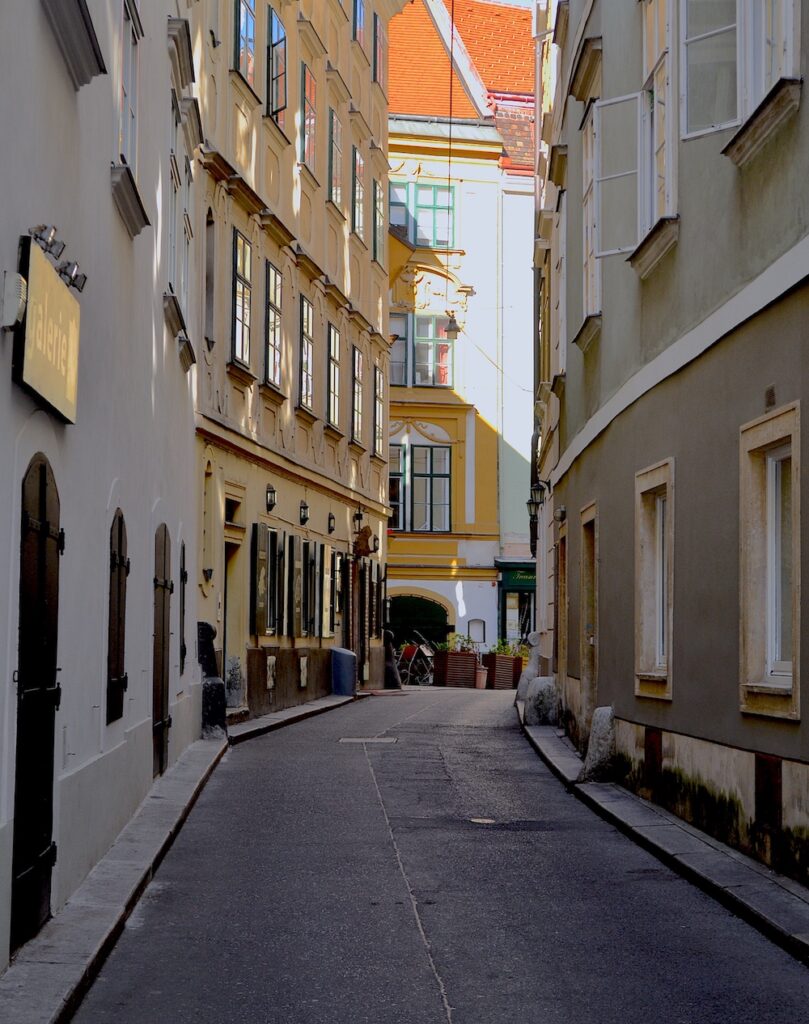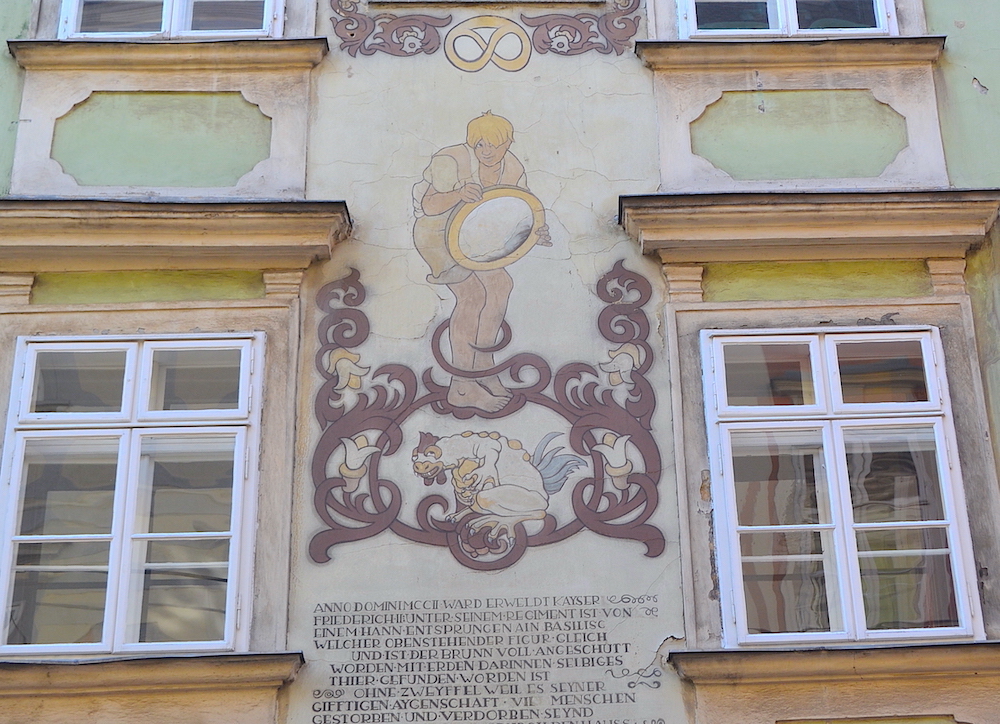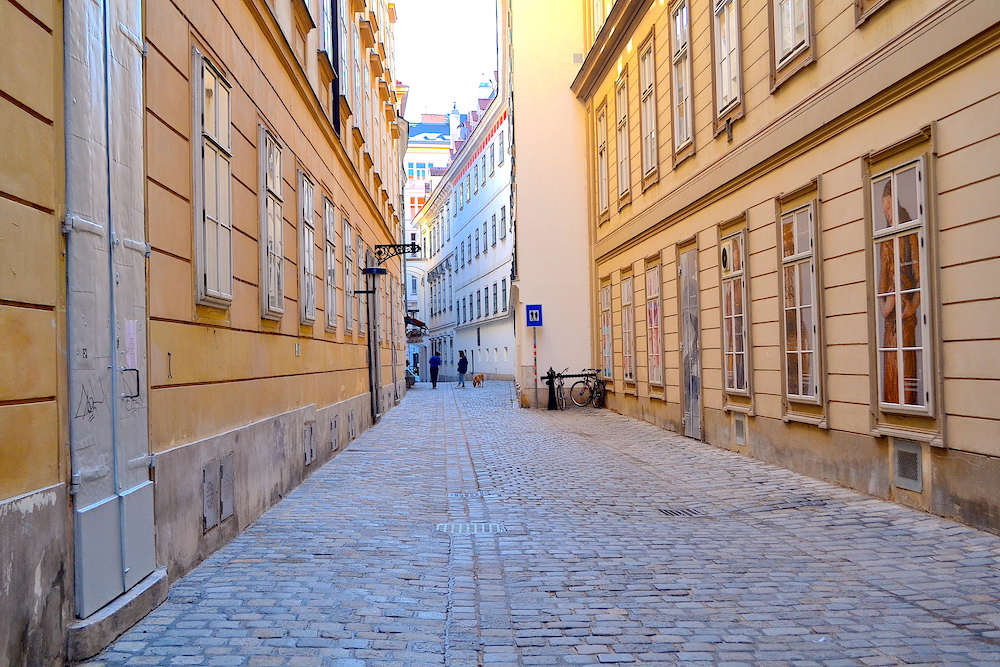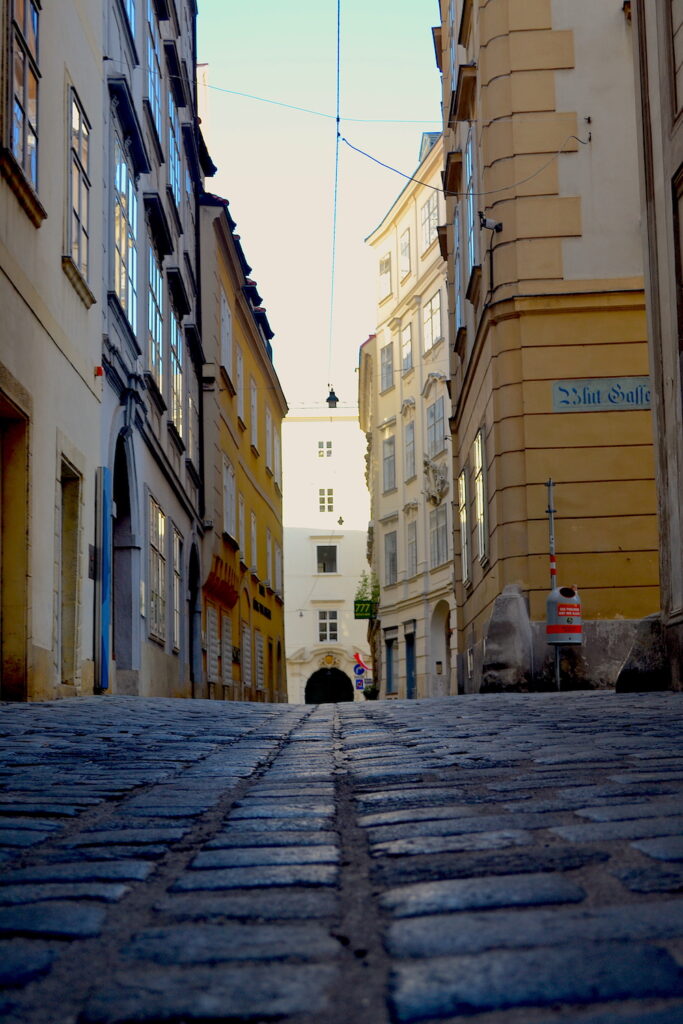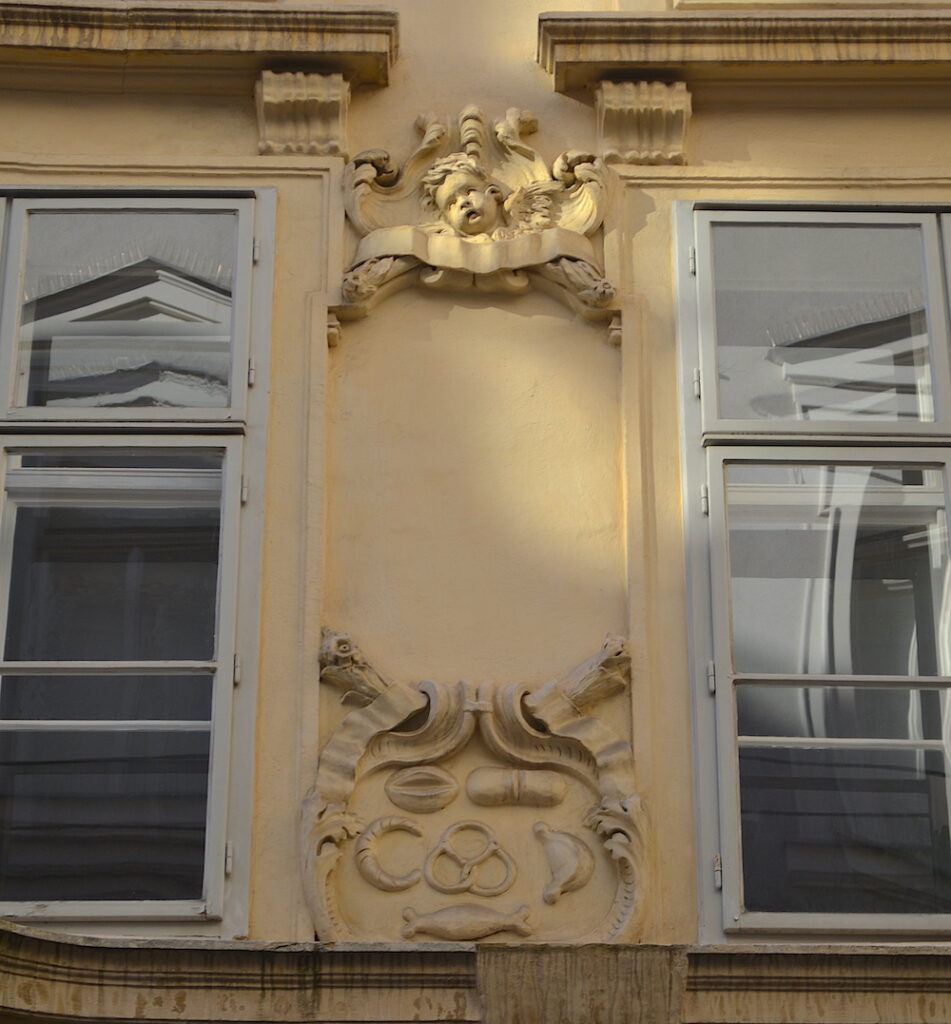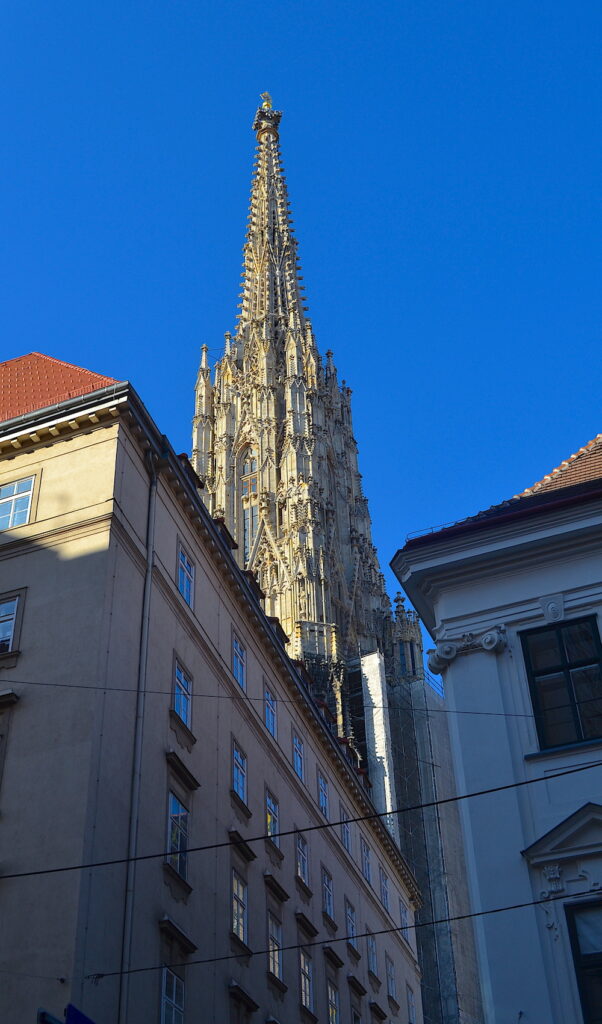The Viennese street names not only serve as orientation in the street network, but they also tell stories, tales and describe the character of the city.
The narrow Hafnersteig leads to the center of the “Fleischmarkt”. It was mentioned for the first time in 1220. Therefore, it’s the oldest meat market in Vienna.
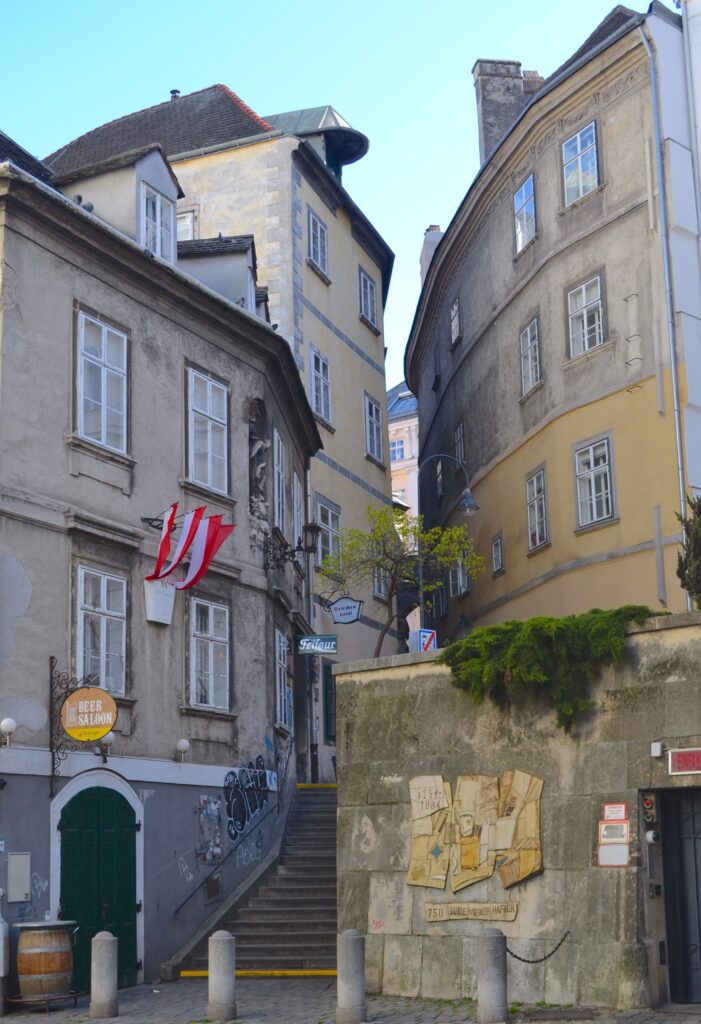
In the basement of the house, that dates from the 17th century, is housed a well-known tavern, the “Yellow Eagle”, later known as “The Golden Eagle.
Learn a little patience. You never know what might be around the corner. Still, around it, there may wait, a new road or a secret gate.
The Basilisk at the bakery
The bakery in “Schönlaternegasse” was well known for its good bread. According to the legend, the basilisk was found in the well of a bakery by a young maid.
The Basilisk is a mythological lizard type beast that was supposedly a cross-breeding of a cock, a toad, and a snake.
Georg, one of the baker’s helpers, who was secretly in love with the maid, volunteered to undertake this task to gain the Master’s approval of their marriage plan.
Down in the well, the basilisk looked into the mirror and when he saw how ugly he really was, burst up.
The well was filled in with stones, and our hero Georg married the young maid.
Blutgassen quarter
The blocks of houses in the so-called “Blutgassen” quarter in the first district, between Singerstraße, Blutgasse, Grünangergasse, and Domgasse, are among the oldest in Vienna.
Their foundations date back to the 12th century. The buildings erected on them date from the 16th and 17th centuries.
To which circumstance the blood alley (Blutgasse) owes its name has not yet been established. According to the legend, in Medieval times (1312) the Templars (monks) were brutally slaughtered in their courtyard (Fähnrichhof) and the blood ran down the little lane like a stream.
Nearby the St. Stephen’s Cathedral is the small street named Domgasse.
At the address “Domgasse 5” you can visit the only existing Mozart’s apartment in Vienna. From 1784 to 1787, the composer lived in this Haus with his wife Constanza. During this period, Mozart wrote many works including his opera “The Marriage of Figaro”.
The Kipferl Haus
The first documented mention of a house on this property dates back to the 14th century. Since 1458 the bakers have settled in this area. According to the reports, this place is the birthplace of the famous Viennese croissants (Kipferl).
It is very unlikely, however, that this shape did not appear first at 1683 (allegedly to mock the Turks by the chosen shape of a crescent), as we already know that from the 13th century the bakers gave “chipfen” to dignitaries as a Christmas present.
Above the portal, there is a house sign with old pastry molds, which reminds us of the tradition.
From left to right and from top to bottom the following pastries are visible: Bosniakerl, Schusterlaberl, Kipfel, Brezel, Beugel and, a Girafferl.
The southern tower
The southern tower of St. Stephen’s Cathedral (136.7 m) is, without doubt, the main landmark of the city of Vienna.
Tradition speaks for Rudolf IV as the founder of the tower. The duke himself has laid the foundation stone in 1368. Its construction lasted 65 years, from 1368 to 1433.
At that time the south tower was the highest tower Europa’s. Meanwhile, it’s among the top ten church buildings. The tallest church is in Ulm, Germany (161,5 m.)
During the Austria – Hungary monarchy no building was allowed to be built higher than St. Stephen’s Cathedral.
Travel. Explore. Discover.


